How to Determine Market Cycles Using the MVRV Ratio

MVRV is a widely-used network metric that helps identify market cycle trends and extremes.
How to Determine Market Cycles Using the MVRV Ratio
The MVRV ratio is one of the most popular network metrics used in cryptocurrency analysis. It is calculated by dividing the market capitalization by the realized value.
Market capitalization is the total value of all coins multiplied by the current coin price.
Realized value is a metric that measures the value of all tokens at the time they were last moved on the blockchain.
MVRV is often regarded as a macro oscillator that helps identify Bitcoin's market cycles and locate tops and bottoms.
- If MVRV equals 1.0, the current price corresponds to the realized price, and investors are at breakeven.
- If the MVRV equals 1.5, it means that the current price is 1.5 times higher than the realized value. Investors, on average, make +50% profits.
- If MVRV equals 0.5, it means that the current price is half the realized price, and investors are on average at a loss of -50%.
MVRV chart highlights extreme zones (red and green) that correspond to Bitcoin price bottom or top.
- High values (MVRV above 2.2) indicate significant unrealized gains in the market.
- Low MVRV values (below 1.0) indicate significant unrealized losses in the market.
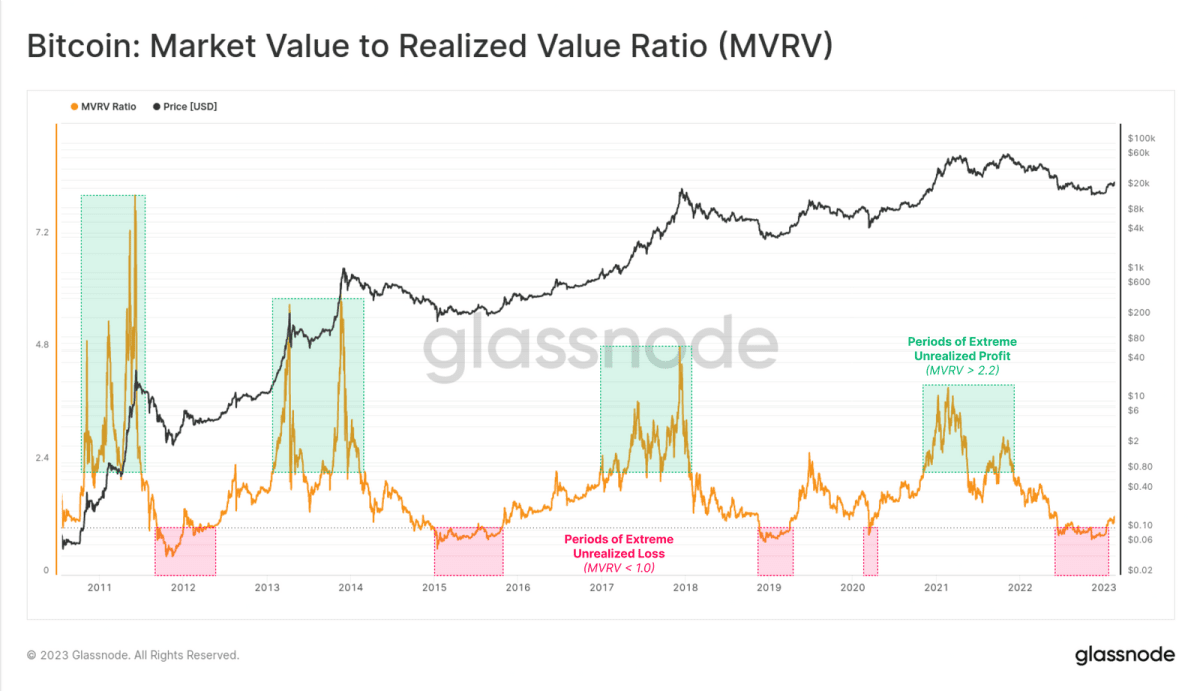
The MVRV chart also has key levels: 0.8, 1.0, 2.4, and 3.2.
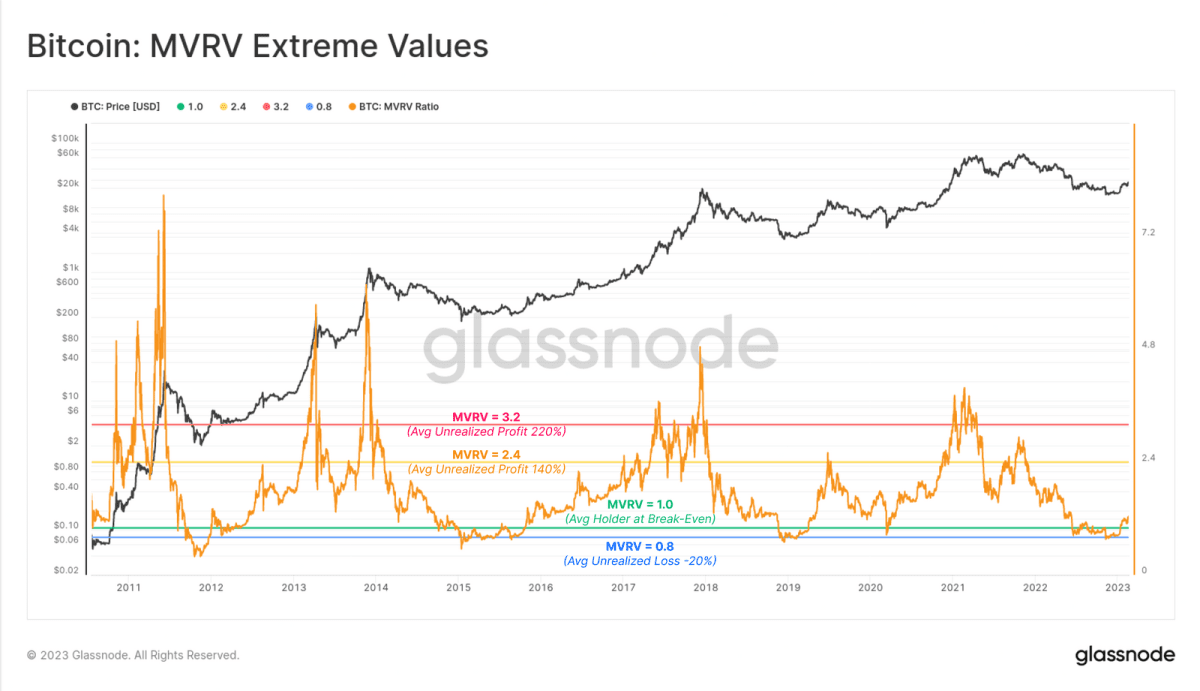
The percentage of days MVRV was in a specific zone must be calculated to establish the relevance of these critical levels.
- ? MVRV has been below 0.8 for approximately 5% of trading days.
- ? MVRV has been below 1.0 for approximately 15% of trading days.
- ? MVRV has been above 2.4 for approximately 20% of trading days.
- ? MVRV has been above 3.2 for approximately 6% of trading days.
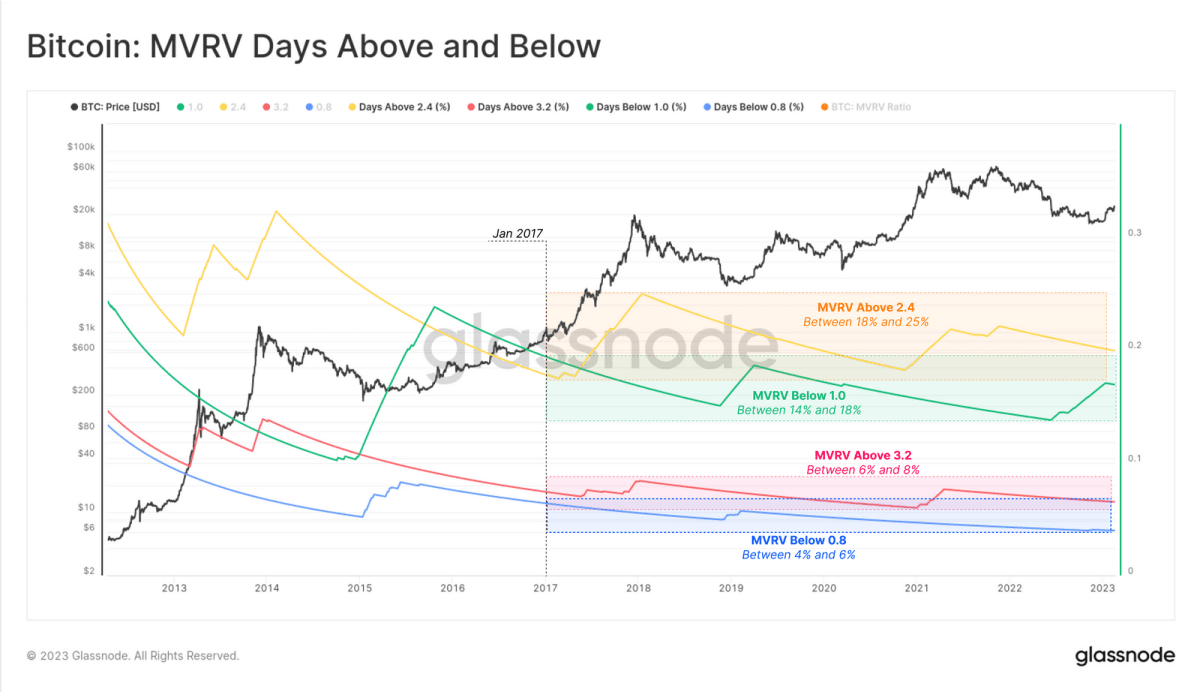
This allows us to identify the cycle's peaks and troughs:
- ? Cycle lows are typically formed when MVRV is below 0.8.
- ? Capitulation starts when MVRV is below 1.0.
- ? Euphoria starts when MVRV is above 2,4.
- ? Cycle peaks are typically formed when MVRV is above 3,2.
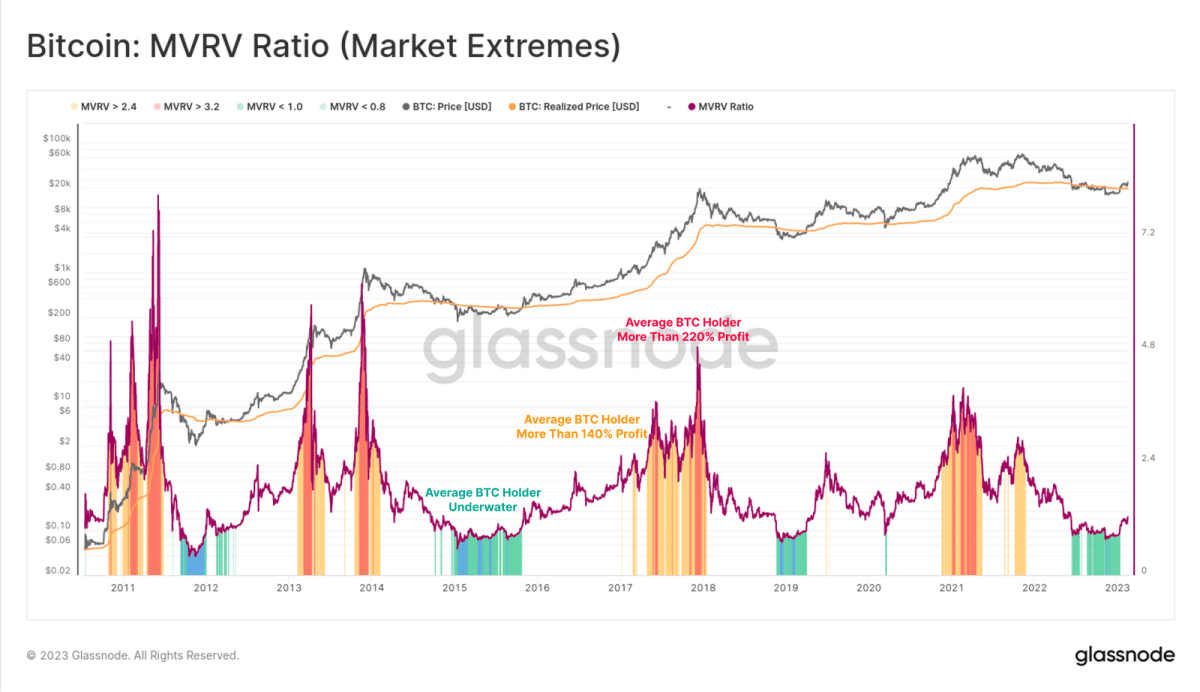
The following "thresholds" can be visualized as price ranges.
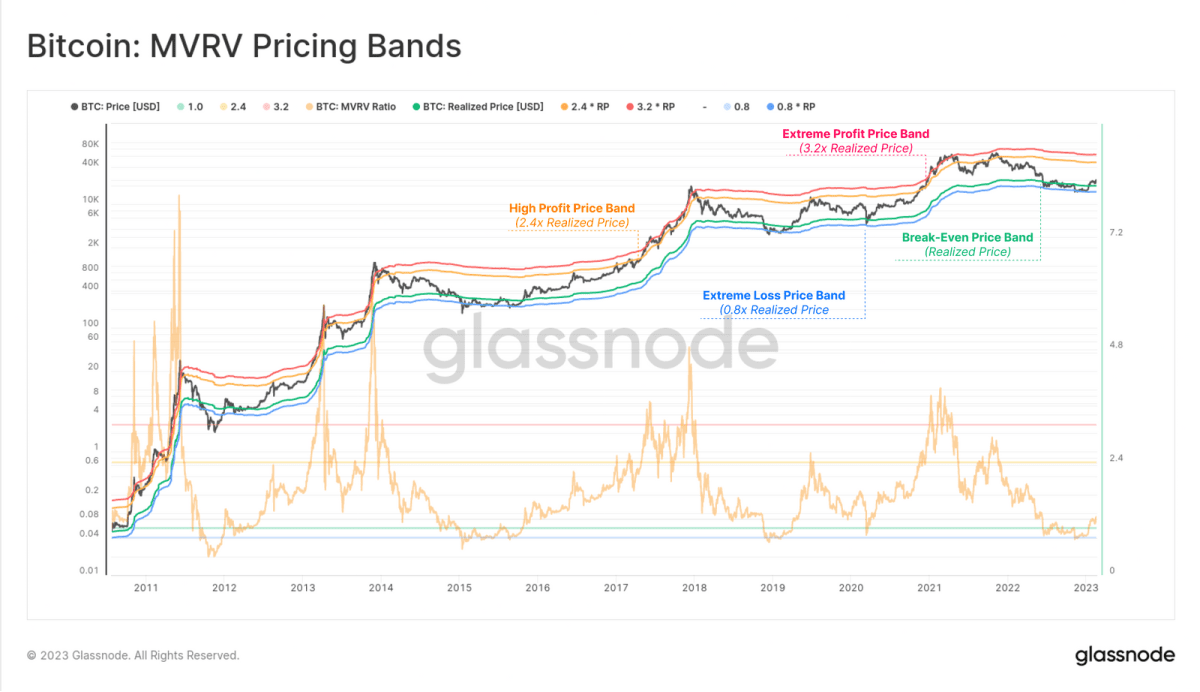
Calculating the mean MVRV value over time and using the range of one standard deviation provides a more accurate understanding of extreme MVRV values.
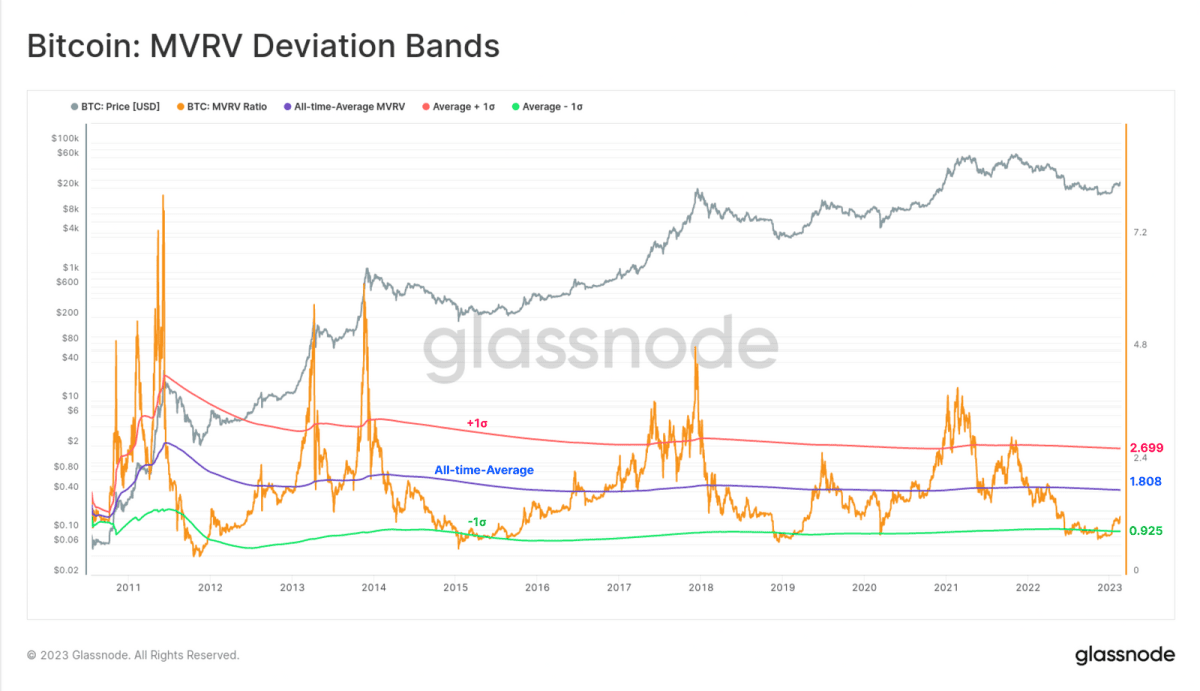
MVRV Momentum
The MVRV ratio can also be used to determine macroeconomic trends in the market.
The MVRV is shown on the chart together with a simple 1-year moving average. It is possible to identify periods when the MVRV trades above the 1-year SMA, indicating a bull run. In contrast, when it is trading below, this indicates a bear market.
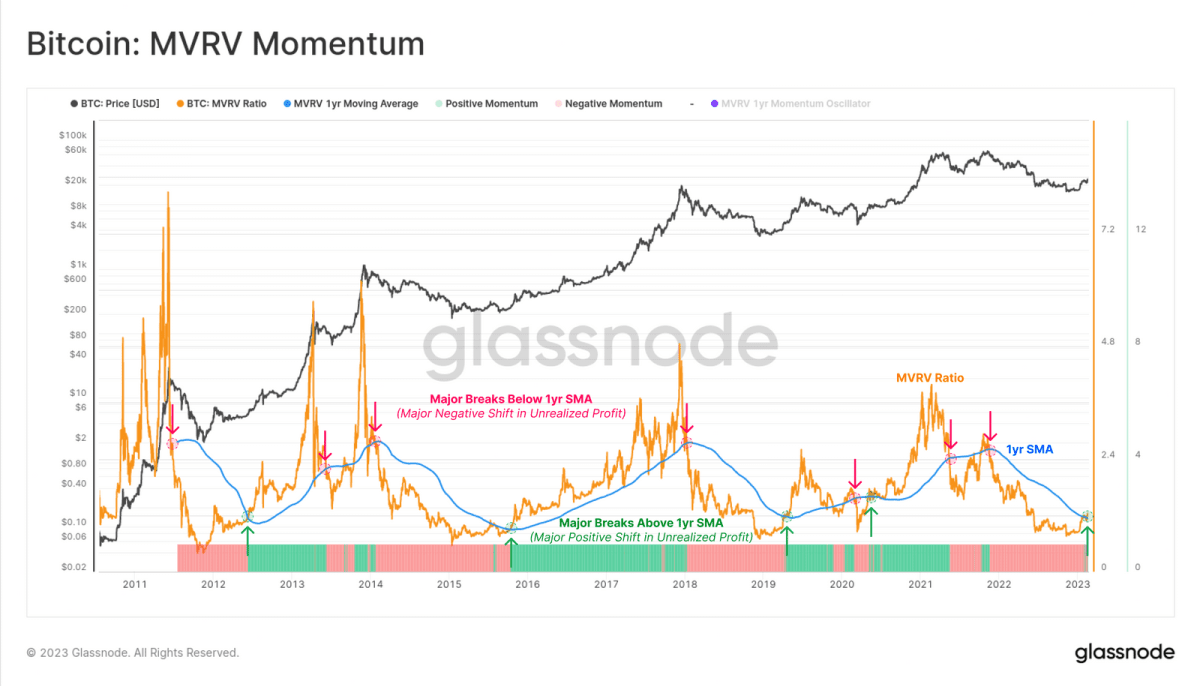
The interaction between the MVRV and the 1-year SMA can be transformed into an oscillator. This tool is particularly useful for identifying momentum shifts at cycle turning points.
- Bear market start: a sharp decline and negative oscillator values indicate that a large amount of coins were purchased at higher prices, becoming unprofitable.
- Bull run start: A rapid surge and positive oscillator values indicate that a large number of coins were purchased at lower prices, starting to show profits.
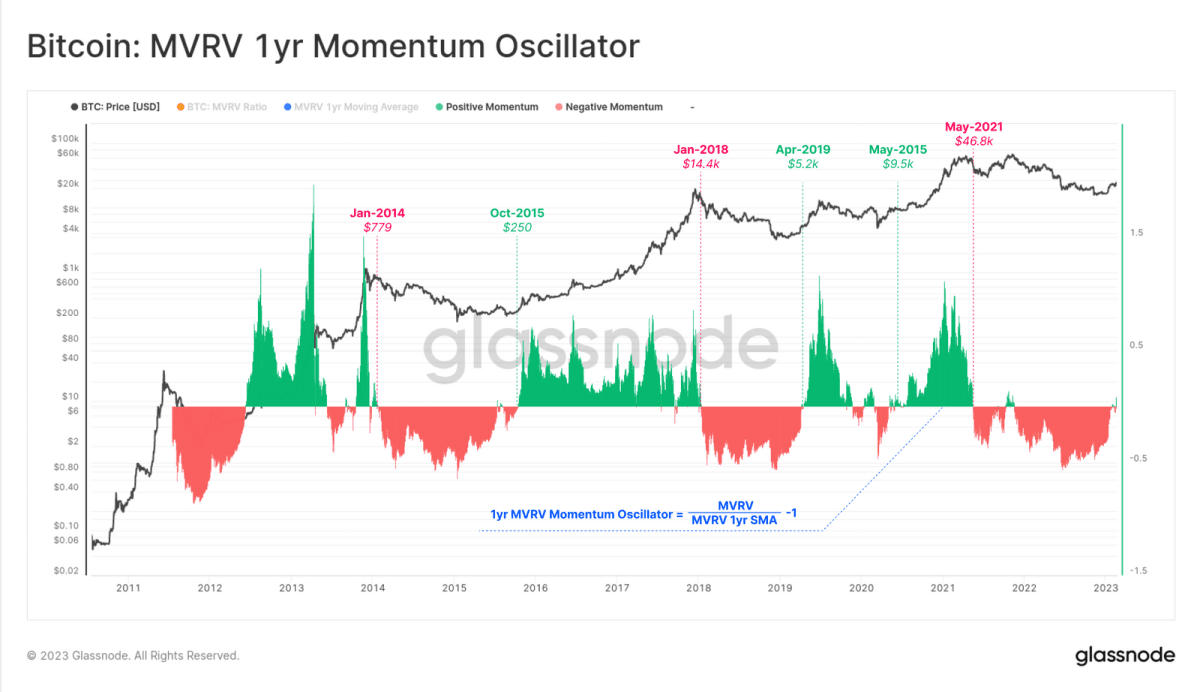
Distribution divergences
MVRV can be used to detect intense divergence in advance, often observed at the peaks of the market cycle. This occurs both macro and micro.
The graph displays the MVRV ratio throughout the 2020-2023 cycle. Prices in October-November 2021 reached a higher value than April, but established a significantly lower MVRV peak.
And the essence is that the average coin acquisition price in November was higher than in April. This resulted in a negative divergence in the MVRV coefficient at the macro level.
During the growth period from July to November, a large volume of coins previously acquired at lower prices (for example, during the sell-off in May-July) were sold. These coins were purchased by less experienced traders and their prices approached the ATH.
During the growth period from July to November, a large volume of coins previously acquired at lower prices (for example, during the sell-off in May-July) were sold. These coins were purchased by less experienced traders and their prices approached the ATH.

If we look at a smaller range, for example from January to May 2021, we may observe a similar negative divergence, yet its scale is smaller. The price consistently set new highs, but MVRV quickly declined, forming lower peaks.
The aggregate profit held within the supply was diminishing, a result of large scale distribution, and profits being converted from unrealized (paper gains), to realized (locked-in).
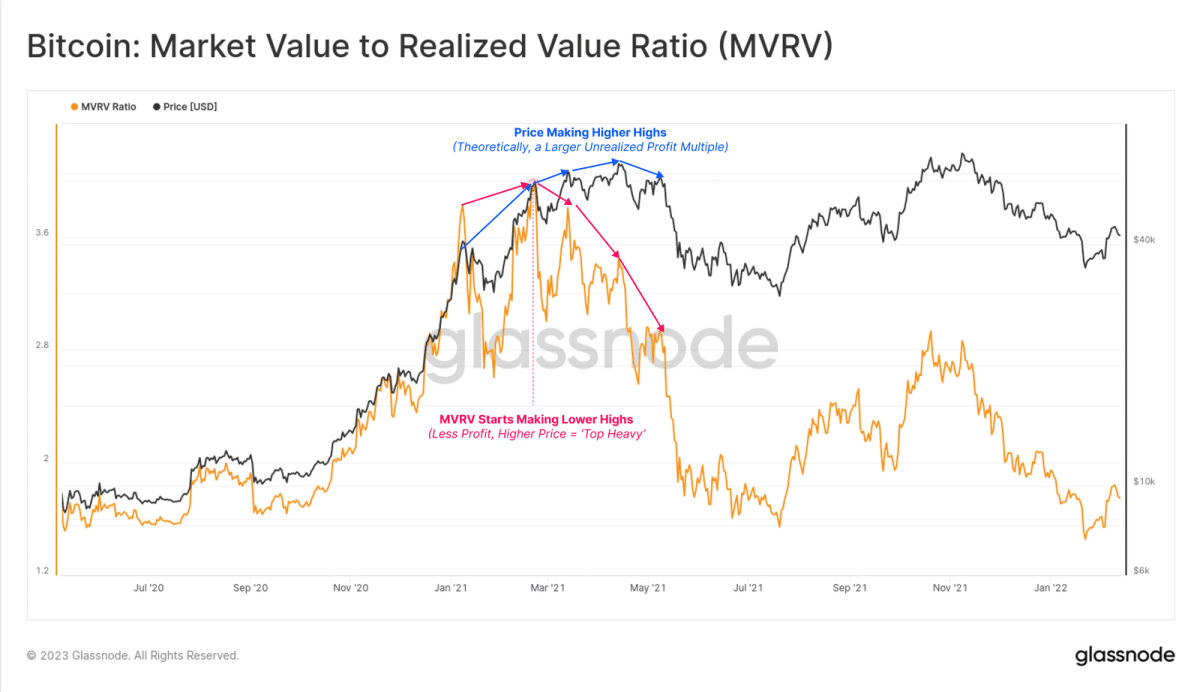
MVRV deviations
MVRV is a popular metric indeed, yet there are several risks and limitations to consider.
For example, since MVRV takes realized capitalization into account in its formula, it would mean that any transaction represents coins’ final sale. MVRV considers this as a change in ownership, which leads to an inaccuracy in the coefficient since it is impossible to know whether a transfer of coins represents a sale or just a change of wallet by a user who bought the coin at a very low price.
Another significant issue with MVRV is lost coins. This can cause a sharp upward bias in the MVRV due to the existence of a large number of such assets that were last moved at a very low price. One solution to this problem is to exclude coins older than 7 years from the calculation.
Another significant issue with MVRV is lost coins. This can cause a sharp upward bias in the MVRV due to the existence of a large number of such assets that were last moved at a very low price. One solution to this problem is to exclude coins older than 7 years from the calculation.
The chart displays the adjusted MVRV which deducts unrealized gains from dormant coins. This results in a corrected realization price that is higher and more accurately reflects the average coin acquisition price. Consequently, this leads to a lower MVRV ratio that provides a more accurate insight into liquid and mobile coin supply.

The MVRV ratio is a metric rich in information about market dynamics and investor behavior models. Thanks to the open blockchain, analysts may track current coin movements and analyze profitability. However, it is key to remember that any metric is just another way of looking at the market and assessing the situation. It is not wise to rely solely on one source of data, as the MVRV allows studying the market only from a certain perspective.

